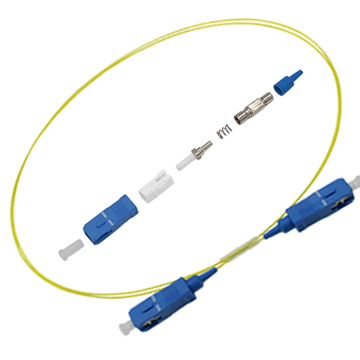
Standards and Test Content for Fiber Optic Connector Testing
Fiber optic connectors are essential components in modern communication systems, and their performance can have a significant impact on the quality of data transmission. To ensure that fiber optic connectors meet the necessary performance standards, it is important to test them using established industry standards and guidelines. In this article, we will discuss the key standards and test content for fiber optic connector testing.
Standards for Fiber Optic Connector Testing
The International Electrotechnical Commission (IEC) has established a set of standards for fiber optic connector testing, known as IEC 61300. These standards outline the testing procedures and acceptance criteria for a variety of connector types, including single-mode and multimode connectors, as well as different connector interfaces such as SC, ST, and LC.
In addition to the IEC standards, there are also several other industry standards and guidelines that are commonly used for fiber optic connector testing, including those established by the Telecommunications Industry Association (TIA) and the Institute of Electrical and Electronics Engineers (IEEE).
Test Content for Fiber Optic Connector Testing
Fiber optic connector testing typically involves several different types of tests, each of which is designed to evaluate a specific aspect of connector performance. Some of the most common tests include:
Visual Inspection: A visual inspection is the first step in connector testing and involves checking the connector end-face for contamination, scratches, or other defects that can affect performance.
Insertion Loss: Insertion loss testing measures the amount of signal loss that occurs when light is transmitted through the connector. This test is used to evaluate the quality of the connection and identify potential issues with connector alignment or contamination.
Return Loss: Return loss testing measures the amount of reflected light that is sent back through the connector. This test is used to evaluate the quality of the connection and identify potential issues with the connector’s end-face.
Interchangeability: Interchangeability testing involves connecting the connector to different types of equipment to ensure that it can be used with a variety of systems and devices.
Environmental Testing: Environmental testing involves subjecting the connector to various environmental conditions, such as high temperature, humidity, or vibration, to evaluate its performance under real-world conditions.
Conclusion
Testing fiber optic connectors using established industry standards and guidelines is critical to ensuring their performance and reliability. The IEC 61300 standards, as well as those established by the TIA and IEEE, provide a framework for connector testing and acceptance criteria. Testing content can include visual inspection, insertion loss, return loss, interchangeability, and environmental testing. By using these standards and testing methods, organizations can ensure that their communication systems are operating at their best and delivering reliable, high-performance data transmission.
